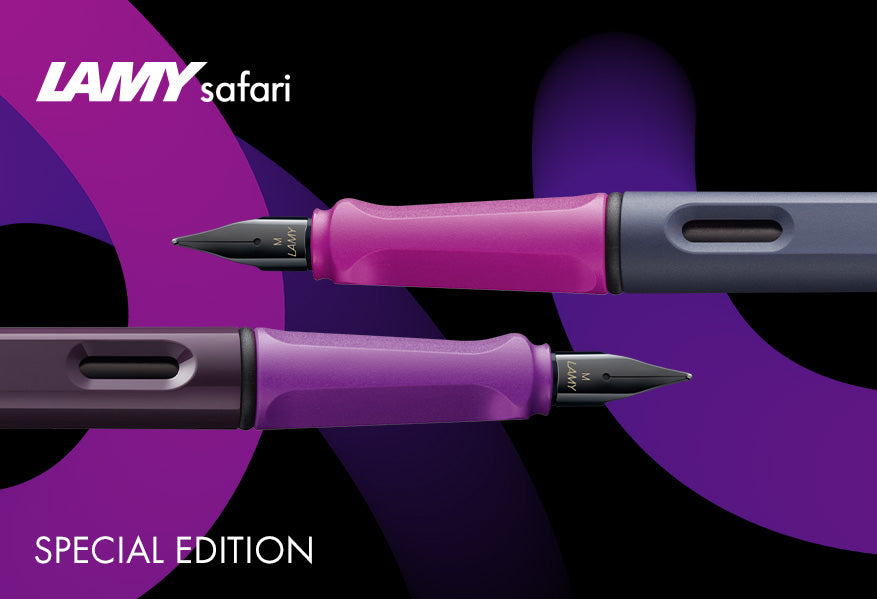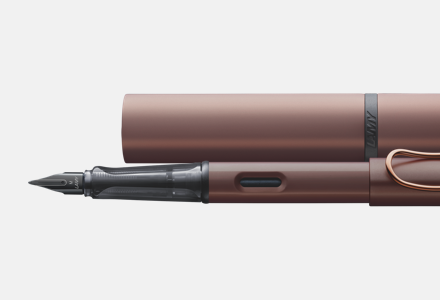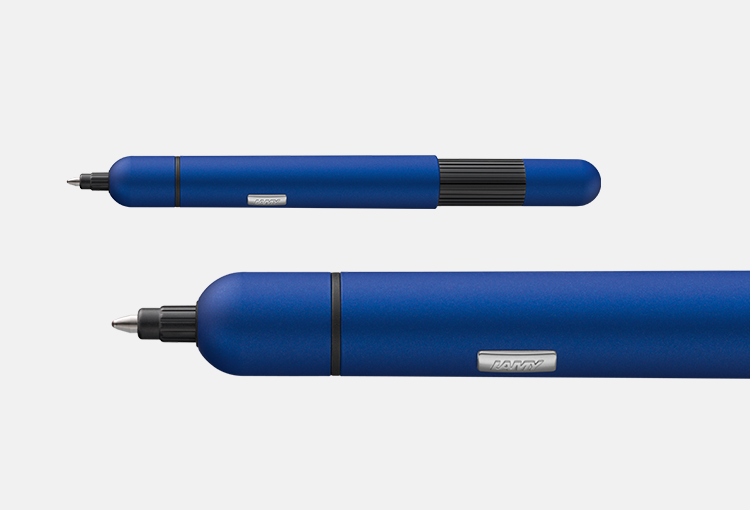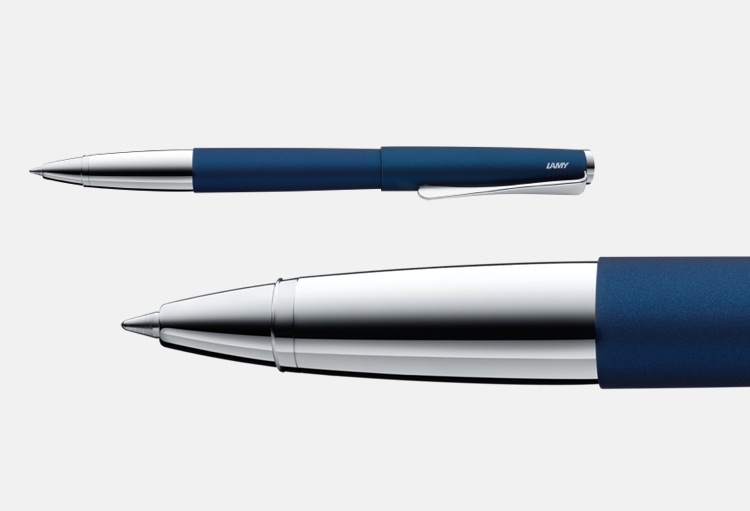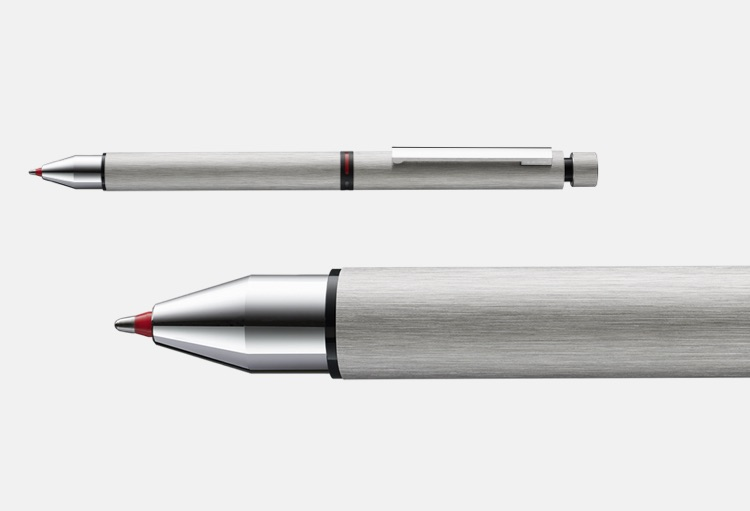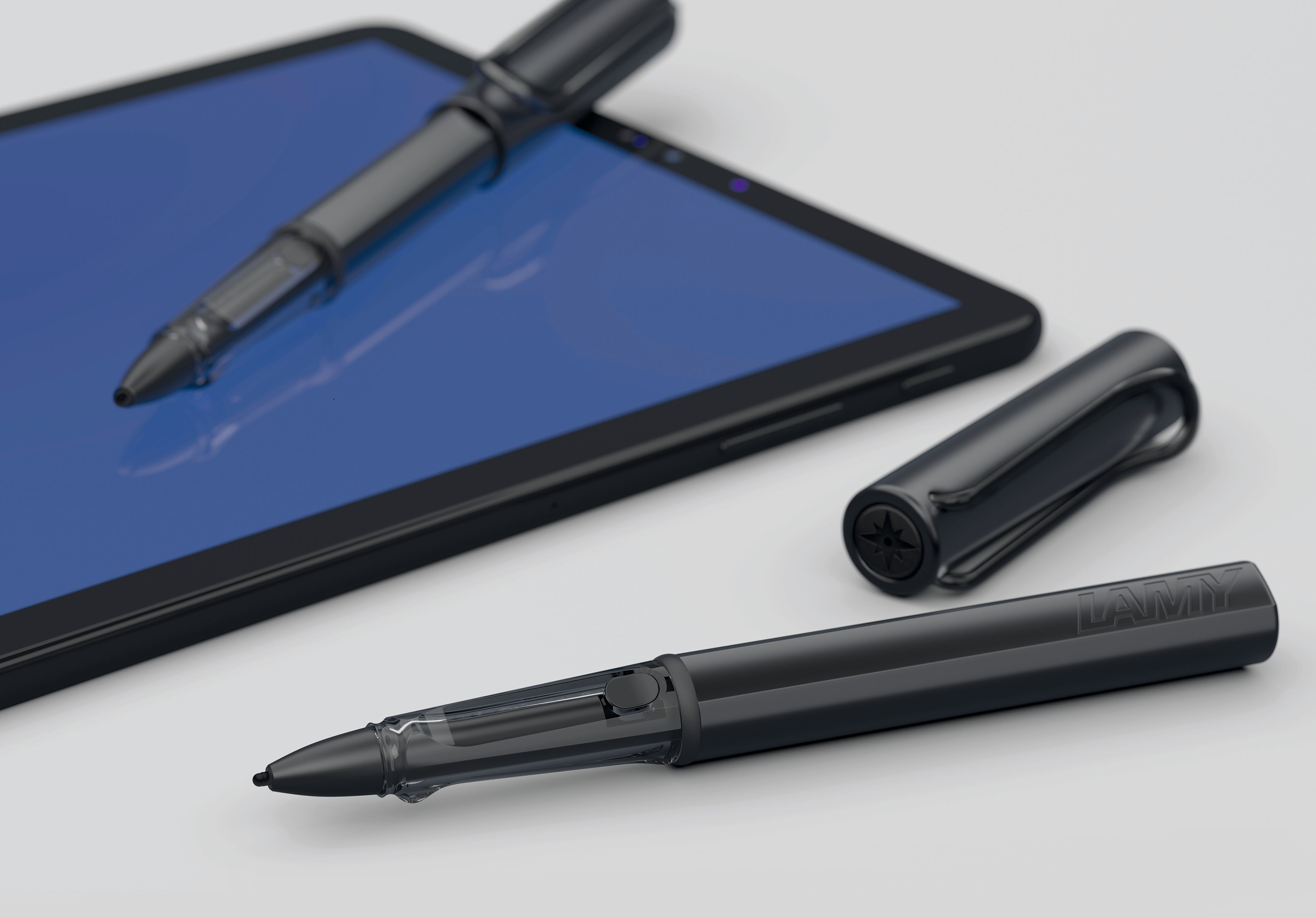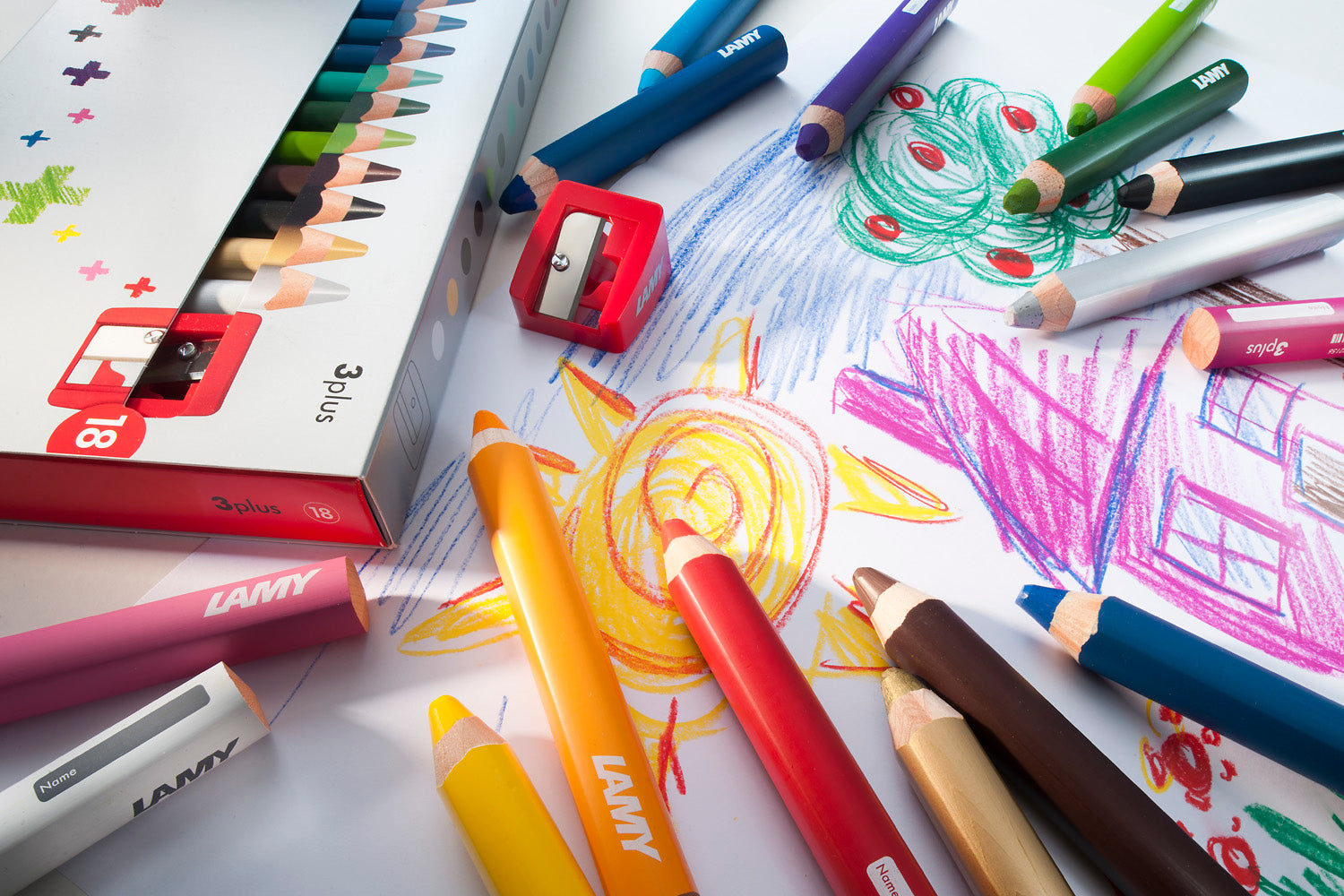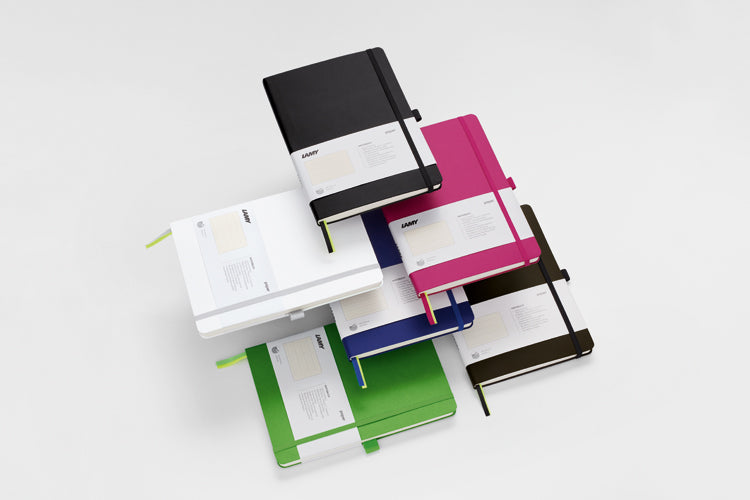Frequently Asked Questions
About orders
We make deliveries to Sweden, Denmark, Norway, Finland, Belgium, Bulgaria, Croatia, Cyprus, Czechia, Hungary, Estonia, France, Iceland, Ireland, Italy, Latvia, Lithuania, Luxembourg, Malta, Portugal, Slovakia, Slovenia.
It depends on where you are. Within Sweden, the delivery time is normally about 2-5 working days. For express delivery, it takes up 1-2 working days.
The delivery time to other listed countries is normally about 3-7 working days. It may vary upon different countries
We offer a 30-day window for all returns or exchanges. To qualify for a return or exchange, the product must have been purchased from one of two places:
1. Our official online shop at www.lamyshop.se
2. Our physical shop at Tégnergatan 15, 11140 Stockholm
For detailed information on how to process a return or exchange, please check out here.
About LAMY products
If a nib really scratches, it feels very uncomfortable when writing, because the nib does not glide smoothly over the paper but gets "caught" in the paper fibres.
Very thin nibs will never glide as smoothly as thicker nibs. This is not possible because of the way the nib is designed, as a very fine nib penetrates more into depressions in the paper. Depending on the paper used, the EF nib is therefore scratchier than thicker nibs. On very smooth paper, however, this effect should hardly be noticeable. Also, very thin nib glide smoothier after being used for a period of time.
If a nib (regardless of thickness) scratches on very smooth surfaces, there is something wrong with it: for example there is no clean grind of the nib or the nib legs offset (unclean production, drop on the floor or due to too much lateral pressure while writing). In this case, the nib need to be changed.
In the end, it is also a matter of taste. For some, a (very narrow) nib scratches, for others it is normal.
Whether is a new or used pen, the ink may stop flow due to a clogged or partially clogged feed system. New pens can come with sediment in the pen while the ink in used pens can dry over time clogging the feed system (So, we suggest you clean out your fountain pen when they are not being used).
Remember: when your fountain stop writing or the ink flow is unsmooth, Please clean your fountain pen thoroughly firstly. If it still doesn't work, feel free to contact us.
There are various ways to clean a LAMY fountain pen:
With a piston fountain pen, it is sufficient to simply fill the fountain pen repeatedly with water and empty it.
To clean a cartridge fountain pen inbetween uses, hold the front part upside down under a running tap until the water no longer discolours. In case of heavy soiling, it usually helps to put the entire front part into a water bath with lukewarm water for 1-2 days. It is important to keep changing the water.
You can also use a converter for cleaning: Rinse the fountain pen over the nib with clean water rinse / clean by simply pulling out the converter several times - empty it, and repeat.
If you are not going to use your fountain pen for a long time, you can pour the remaining ink from the converter back into your ink glass. Very sustainable!
Important: Please never use washing-up liquid or similar for cleaning the fountain pen!
LAMY offers a wide range of nibs - it is best to test which one best suits your personal needs and individual typeface at your local LAMY dealer.
A-nib
- Ideal for beginners
Rounded nibs: M and LH
- Allround nibs
- optimised for left-handers
Straight nibs: EF, F, B, BB*
- For a straight writing position
- Straight ground iridium ball
Slanted nibs: OM**, OB**, OBB*
- For slanted writing position
- One side of the nib is shortened or slanted.
Italic nibs
- Called a calligraphy or ribbon nib
- Typeface with different stroke widths suitable for calligraphy
*only available with LAMY 2000
** only available as gold nibs
When you purchase, you can choose which nib strength you want your new fountain pen to arrive with. But you also have the option of purchasing additional fountain pen nibs later.
The standard left-handed nib corresponds to the M-medium nib strength, the LH nib is only more specially sharpened. The LH nib is preferred for school fountain pens, because beginners and children in general can learn the correct writing posture better. This is an essential building block for the overall writing behaviour and handwriting style. Adults benefit from several years of writing and therefore do not necessarily need a special left-handed nib.
Many of our customers are left-handed and write with an F-fine or B-wide nib, but also with a fine one or with the gold nib. They get on very well with them.
Remember: Since all Lamy fountain pens, except for the LAMY 2000, have the same ink conduction system, you can use any nib of any thickness on all Lamy fountain pens.
The short answer is no. The long answer is no, but some of
our lamy inks are document proof. It means the ink cannot be erased, dries fast, is non fading to a certain degree, and is resistant to some chemicals and solutions.
Document proof LAMY inks are: LAMY T53 crystal ink Benitoite, LAMY M16 ballpoint refill, LAMY M22 ballpoint refill, LAMY M21 ballpoint refill.
Contents:
In the Middle Ages the ferro-gallic ink was the mostly used ink with quills. The disadvantage of the ferruginous ink was that it aged and dried up in the bottle very quickly and was therefore not suitable for fountain pens. After new dyes appeared on the market which were water soluble and after further developments with synthetically water soluble dyes, ferro-gallic ink became less and less popular.
The common inks of today for fountain pens are pure colour inks made of water and dyes.
Durability:
The average durability of an ink cartridge is 12 months. After 12 months the ink starts to evaporate. The result is that the ink cartridge is only filled half with ink although it is unused.
Mixing of different ink colours:
The mix of different ink colours is not recommended. Due to the different ph-values the colours might precipitate. Please make sure that your fountain pen is thoroughly rinsed with water before filling it with a new ink colour.
Removing ink stains:
Only the royal blue ink can be washed out of most textiles. It is the best to wash out other colours with washing powder and water as soon as possible.
Please do not treat with a solvent.
Waterproof:
According to German DIN ISO Standard fountain pen inks are not waterproof. Black and blue-black ink is very permanent and can be read even after decades when stored in a dry and shady place.
LAMY ink is designed to dry quickly on the paper, usually after 6 to 8 seconds. On the other hand of course, we know it is essential to prevent the ink from drying out in the fountain pen or rollerball pen. In our ink laboratory at Lamy Headquarters in Heidelberg, the ink is tested under various temperature conditions. At higher temperatures, it can happen that the ink dries out more easily, but this should not happen regularly.
Writing instruments without cap (ballpoint pens or a rollerball pen like LAMY tipo) have a higher risk that a plug of crystallized ink / ballpoint pen paste forms at the tip of the refill at higher temperature (expansion with heat pushes the ink/paste out of the refill) If you wipe off the refill before the first use, however, you should be able to write fluently.
When it comes to ballpoint pen refills, you can choose between the LAMY M16 large-capacity refill, LAMY M22 compact refill, LAMY M21 for multi-system pens and the LAMY M55 marker refill for multi-system pens.
You can easily find out exactly which refill you need for your ballpoint pen or multi-system pen by unscrewing your ballpoint pen and writing down the model number (e.g. LAMY M16) that can be seen on the refill. Our tip: Also check whether your Lamy ballpoint pen is compatible with one of our large-capacity refills - these contain even more refill paste for particularly long writing pleasure.
Simply speaking, LAMY M63 refill is compatible with LAMY rollerball pen with a cap. For example, LAMY safari, LAMY Al-star etc. LAMY 66 refill is compatible with LAMY rollerball pen without a cap. For example, LAMY tipo and swift. There is an exception for LAMY Imporium rollerball pen which comes with a cap but is compatible with LAMY 66. Of course, the easy way is unscrewing your rollerball pen and writing down the model number that can be seen on the refill.
M16 Ballpoint Refills (Long Life)
- The M16 F (Fine) refill offers an approximate line width of 0.15 mm and the longest writing length at 5,000 meters.
- The M16 M (Medium) refill provides a line width of approximately 0.20 mm, with a writing length of 4,000 meters.
- The M16 B (Broad) refill has a line width of approximately 0.25 mm and an estimated writing length of 3,000 meters.
M22 Compact Ballpoint Refills
- The M22 F (Fine), with an approximate line width of 0.15 mm, offers a writing length of 3,000 meters.
- The M22 M (Medium), with an approximate line width of 0.20 mm, also provides a writing length of 3,000 meters.
- The M22 B (Broad), with an approximate line width of 0.25 mm, completes the series with a consistent writing length of 3,000 meters.
M21 Multi-System Refill
- The M21 refill has an approximate line width of 0.20 mm (Medium) and an estimated writing length ranging from 1,000 m to 1,400 m.
M63 and M66 Rollerball Refills
- The M63 refill has a line width range of approximately 0.30 – 0.35 mm and a writing length of 700 meters.
- The M66 (Medium) refill provides a line width of approximately 0.28 – 0.35 mm and a writing length of 800 meters.
- The M66 B (Broad) refill features the widest line, approximately 0.35 – 0.40 mm, and an estimated writing length of 600 meters.
Due to its special size, there is a special case for the LAMY pico pocket pen, the LAMY A 111. All other cases are compatible with all LAMY writing instruments, whether multi-system pens, fountain pens or pencils. Ultimately, it's your personal taste that decides whether you choose a case that matches the color of the pen or whether you choose a clever visual contrast instead.

